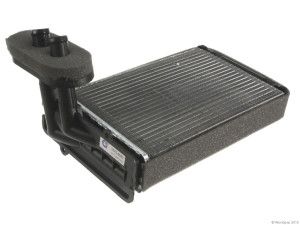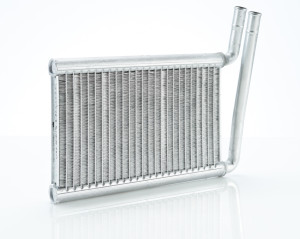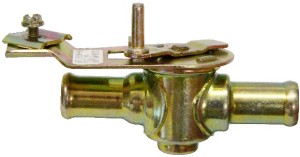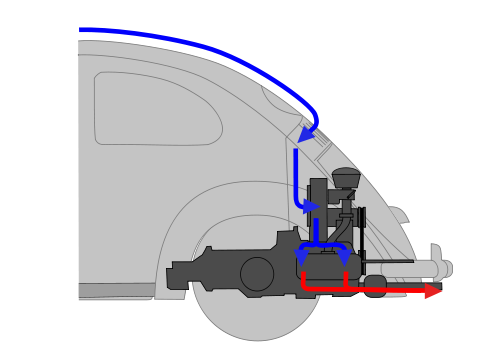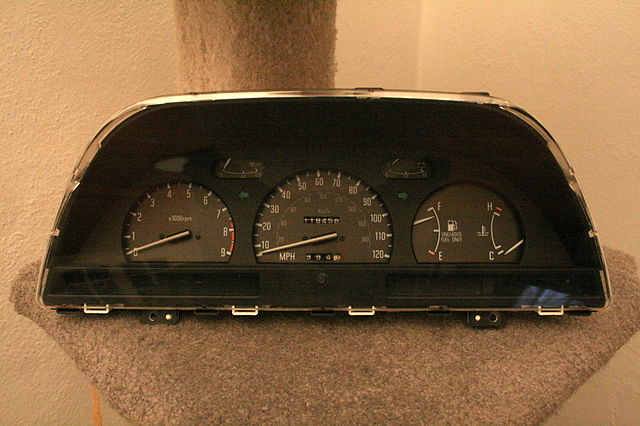What is a Heater Core?
A heater core is one of the main components in most automotive heating, ventilation, and air conditioning (HVAC) systems, and it is also a component in cooling systems that utilize water cooling. In terms of design, heater cores are very similar to radiators, but they are much smaller. They also perform essentially the same function as radiators albeit for different reasons. Where the main purpose of a radiator is to help the cooling system shed heat, the main purpose of a heater core is to raise the temperature inside the passenger compartment.
Contents
Heater Core Design
If you understand the basics of how radiators are designed, then you already know how heater cores are put together. They operate under the same basic principles, so heater cores are essentially miniature radiators. Although there are some variations in design and construction materials, they typically consist of a few main components:
- An inlet
- An outlet
- Header tanks
- Core tubes
- Fins
The most common design involves two heater tanks that are connected by a series of tubes, which have thin fins between them. The inlet and outlet may each be on one of the tanks, but they are commonly both positioned on just one of the tanks. This differs from radiator design where the inlet and outlet are typically located on different tanks.
The tanks may be plastic or metal, but the tubes and fins are made out of metal. Brass and copper have both been commonly used metals in the past, but a lot of modern heater cores are made up of plastic tanks and aluminum tubes and fins.
Heater cores are typically located inside of heater boxes that sometimes contain other HVAC components. These boxes are sealed in order to channel the flow of air, and they may contain mechanically-, electrically-, or vacuum-operated flaps and doors.
Heater Core Operation
The operation of a heater core is also similar to that of a radiator. Hot coolant passes into the inlet, moves through the tubes, and passes back out through the outlet. When an electric blower motor forces air through the core, heat is transferred from the hot coolant to the air via convection, which results in warm air blowing into the passenger compartment.
In some designs, the HVAC controls operate a valve that is places inline between the heater core and the engine. When the heat is turned off, this valve prevents coolant from circulating through the heater core. These valves are typically vacuum- or mechanically-operated.
Since heater cores are essentially small radiators, and they perform the same basic function, a heater core can actually be used as a secondary radiator. That means if an engine starts to overheat, turning on the heat may help cool it down (depending on why the engine is overheating.)
Heater Core Failure
Due to the fact that heater cores are essentially small radiators, they fail for all the same reasons that radiators do. Excessive pressure in the cooling system can cause leakage, as can electrolysis and corrosion. However, the fact that most heater cores are located inside the passenger compartment means that they are typically much more difficult to replace than radiators.
Some vehicles have split heater boxes, which means that part of the box (or even an access panel) can be removed to gain access to the heater core. In other situations, the entire box has to be removed. And in a worst case scenario, the entire dash has to be removed to gain access to the heater core. This type of operation is both difficult and time-intensive, which can render heater core replacement extremely expensive for some vehicles.
Signs of a Failed Heater Core
In many cases, a leaking heater core will result in a sweet smell inside the passenger compartment, either when the blower motor is operating or at all times. Another sign is a sticky film on the windshield, which is the result of a fine mist of antifreeze being blown out of the dash vents.
Depending on the construction of the heater box, coolant may also leak either inside or outside of the vehicle. Coolant inside the vehicle almost always means that the heater core is leaking, whereas coolant outside the vehicle may come from a heater box drain or from virtually any other component in the cooling system.

